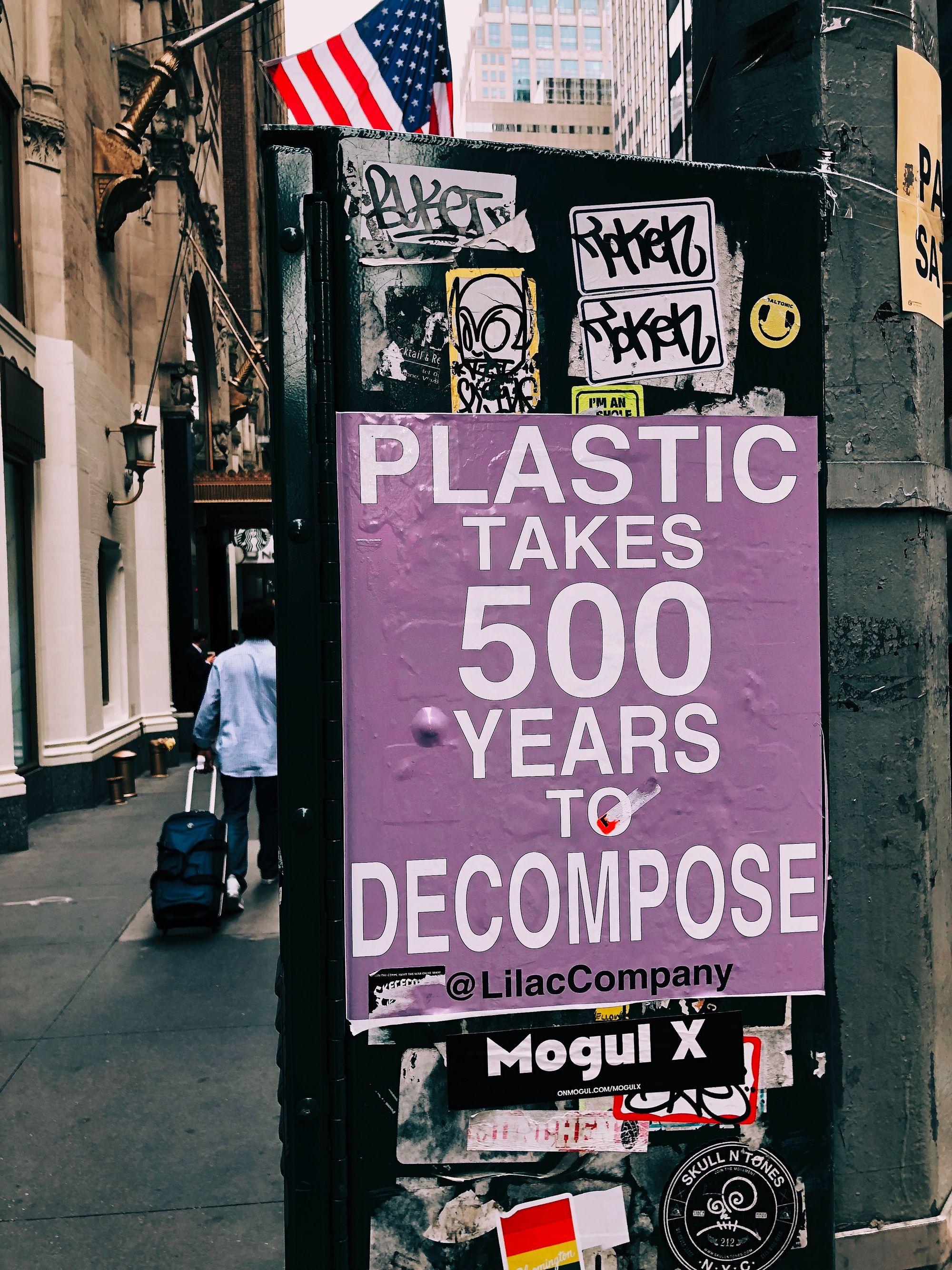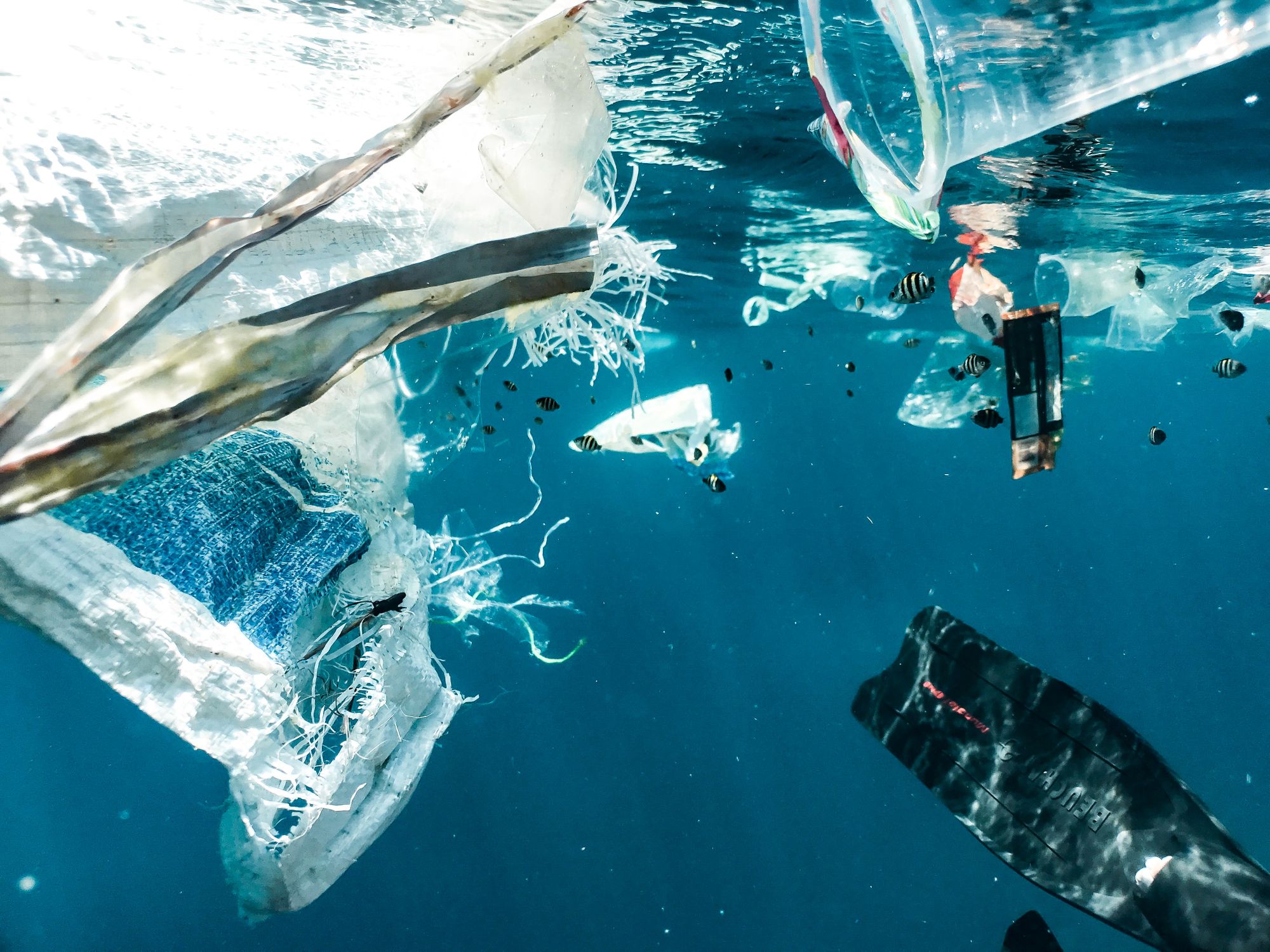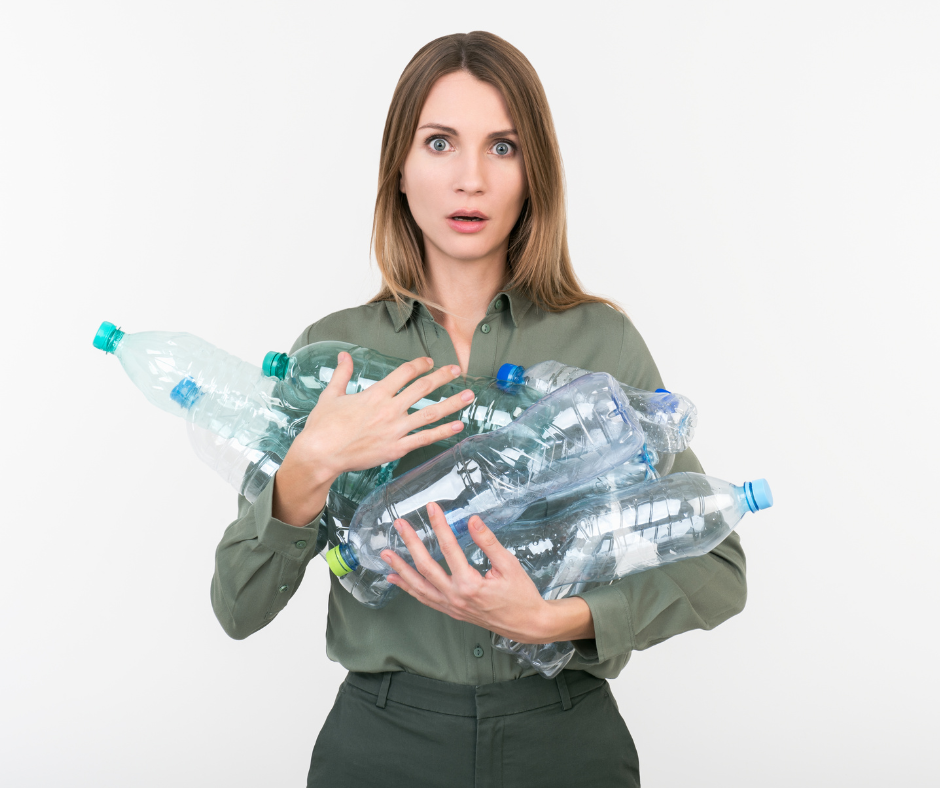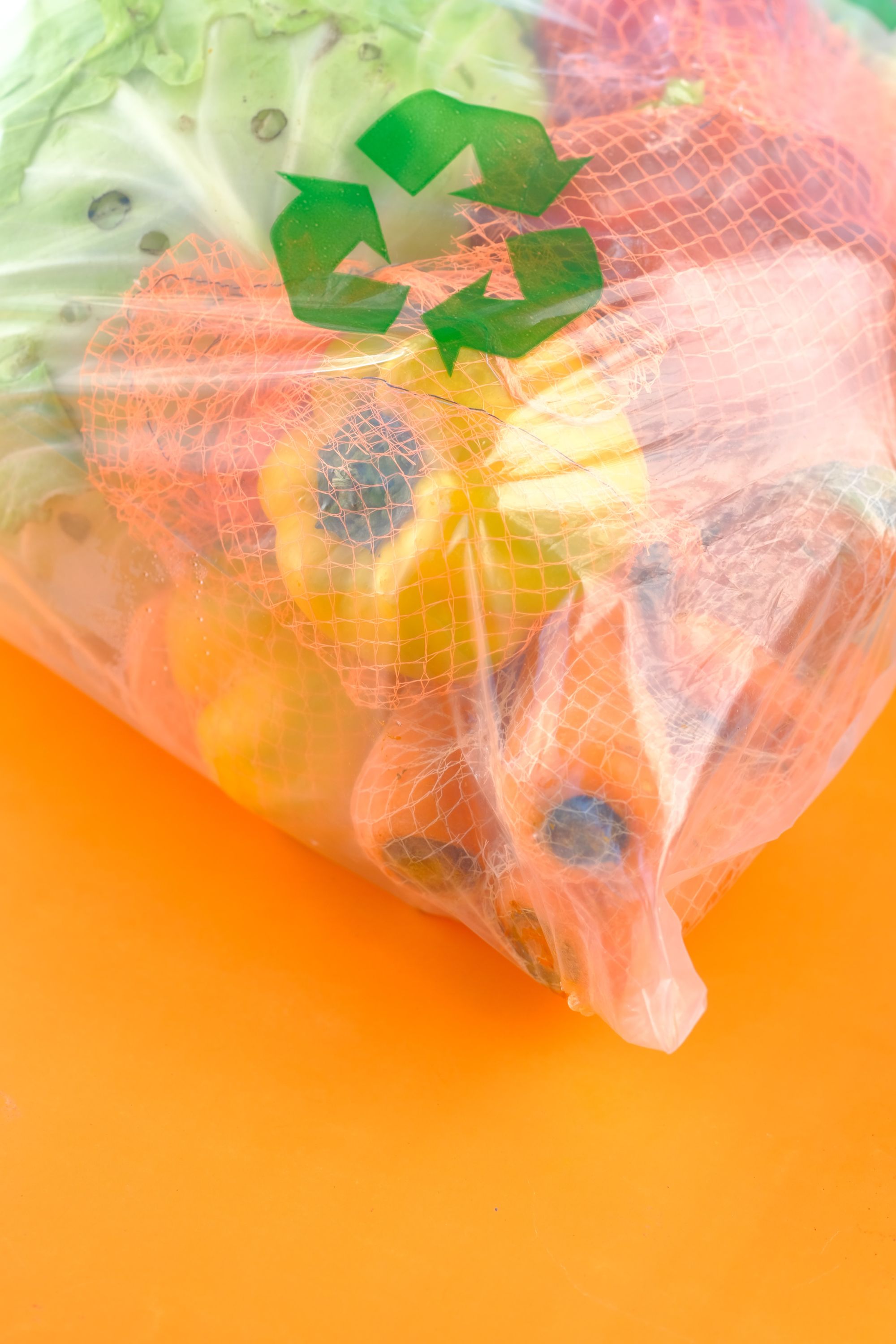As per The Guardian, plastic production accounts for 6% of global oil consumption and is projected to increase to 20% by 2050. Additionally, according to a 2020 survey, 85% of consumers are concerned about the environmental impact of plastic packaging, and 91% would be willing to switch to a brand that uses sustainable packaging materials. (Source: Packaging Europe)
The global bioplastics market is projected to grow from $17.6 billion in 2020 to $44.4 billion by 2025, driven by increasing demand for sustainable and eco-friendly materials. (Source: MarketsandMarkets)

These highlight the trends and perspectives toward sustainability in plastic manufacturing. Plastic is a versatile and widely used material that plays a vital role in modern society, but its production and disposal can have significant environmental and social impacts.
As concerns over climate change and environmental degradation continue to grow, it is important to consider the sustainability of plastic manufacturing and the entire lifecycle of plastic products. This includes the sourcing of raw materials, the production processes, the use of plastic products, and the disposal or recycling of waste.
In this context, it is important to examine how sustainable plastic manufacturing is and what strategies and initiatives can be implemented to reduce its negative impacts and promote more responsible practices.
This article will help you determine how sustainable plastic manufacturing is by covering the following topics:
- How Sustainable is Plastic Manufacturing?
- Which Factors Affect the Sustainability of Plastic Manufacturing?
- How to Ensure Sustainability in Plastic Manufacturing?
- How to Measure the Sustainability of Plastic Manufacturing?
- How to Improve the Sustainability of Plastic Manufacturing?
- Upcoming Trends related to Sustainable Plastic Manufacturing
- FAQs related to Sustainability in Plastic Manufacturing
- How can Deskera Help with Plastic Manufacturing?
- Key Takeaways
- Related Articles
How Sustainable is Plastic Manufacturing?
Plastic manufacturing is generally considered unsustainable due to its negative impacts on the environment, particularly in terms of pollution and resource consumption. While plastic is a versatile material that has a wide range of applications, its production and disposal can have significant ecological and social consequences.
One major issue with plastic production is its reliance on non-renewable fossil fuels, particularly oil and natural gas, as feedstocks. This means that the production of plastic contributes to greenhouse gas emissions, which in turn contributes to climate change. In addition, the extraction and transportation of these fossil fuels can have negative environmental and social impacts.
Another major issue is the disposal of plastic waste. Plastics can take hundreds of years to decompose, and when they do, they can release harmful chemicals into the environment. Plastic waste also poses a threat to wildlife, particularly marine animals, which can become entangled in plastic or ingest it, leading to injury or death.
However, there are efforts underway to make plastic manufacturing more sustainable. One approach is to develop more sustainable feedstocks for plastic production, such as bio-based materials derived from renewable resources like corn, sugarcane, or even algae.
Another approach is to improve recycling technologies and increase the rate of plastic recycling, which can reduce the amount of plastic waste sent to landfills or released into the environment.
Overall, while plastic manufacturing is currently unsustainable, there is potential for improvement through the development of more sustainable feedstocks and improved recycling technologies.
Which Factors Affect the Sustainability of Plastic Manufacturing?
The sustainability of plastic manufacturing is affected by several factors, including:
Feedstocks
Feedstock is an important factor that can affect the sustainability of plastic manufacturing. The type of feedstock used in plastic production can have a significant impact on the environmental, social, and economic sustainability of the process.
Here are some ways in which feedstock can affect the sustainability of plastic manufacturing:
- Environmental impact: The environmental impact of feedstock depends on the source and production process. For example, feedstock derived from fossil fuels such as oil or natural gas has a high carbon footprint and contributes to climate change. In contrast, feedstock derived from renewable sources such as plant-based materials or waste streams can have a lower carbon footprint and contribute to a more sustainable production process.
- Social impact: The social impact of feedstock depends on the source and production process. For example, feedstock derived from palm oil or other crops can contribute to deforestation, land use conflicts, and human rights violations. In contrast, feedstock derived from waste streams or other sustainable sources can contribute to job creation, community development, and other social benefits.
- Economic impact: The economic impact of feedstock depends on the availability, cost, and market demand for the material. For example, feedstock derived from renewable sources such as biomass or waste streams can provide a low-cost, sustainable source of material for plastic production. In contrast, feedstock derived from fossil fuels may be subject to price volatility and supply chain disruptions.
To improve the sustainability of plastic manufacturing, companies can take steps to reduce their reliance on fossil fuels as a feedstock and shift towards renewable and sustainable sources of material.
This can include using recycled plastic or plant-based materials as feedstock, investing in new technologies that enable more sustainable production processes, and engaging with stakeholders to build support for sustainable business practices.
By considering the environmental, social, and economic impacts of feedstock, companies can contribute to a more sustainable and responsible plastic manufacturing industry.
Production Process
The production process is a critical factor that can significantly impact the sustainability of plastic manufacturing. The production process encompasses all the steps involved in the manufacturing of plastic products, from the extraction of raw materials to the disposal of waste.
Here are some ways in which the production process can affect the sustainability of plastic manufacturing:
- Environmental impact: The production process can have a significant impact on the environment, particularly in terms of energy use, greenhouse gas emissions, water consumption, and waste generation. Companies can improve the sustainability of their production process by implementing energy-efficient technologies, reducing emissions, and minimizing waste.
- Social impact: The production process can also have social impacts, particularly in terms of worker health and safety, community engagement, and human rights. Companies can improve the sustainability of their production process by adopting fair labor practices, engaging with local communities, and implementing human rights policies.
- Economic impact: The production process can have a significant economic impact, particularly in terms of cost, efficiency, and profitability. Companies can improve the sustainability of their production process by reducing costs, improving efficiency, and maintaining profitability while minimizing their environmental and social impact.
To improve the sustainability of plastic manufacturing, companies can adopt various strategies such as reducing energy consumption, optimizing production processes, using sustainable materials, improving waste management, and adopting sustainable practices throughout the supply chain.
Companies can also seek to engage with stakeholders and build support for sustainability initiatives to demonstrate their commitment to responsible and sustainable business practices. By improving the sustainability of their production process, companies can contribute to a more sustainable and responsible plastic manufacturing industry.
Disposal
The disposal of plastic products is a critical factor that can significantly impact the sustainability of plastic manufacturing. Improper disposal can lead to environmental pollution, greenhouse gas emissions, and negative impacts on human health and well-being.
Here are some ways in which disposal can affect the sustainability of plastic manufacturing:
- Environmental impact: The disposal of plastic products can have a significant impact on the environment, particularly in terms of waste generation, pollution, and damage to ecosystems. Plastic waste can take hundreds of years to decompose and can harm wildlife through ingestion or entanglement. The disposal can be made more sustainable by implementing recycling programs, promoting composting, and reducing waste generation.
- Social impact: The disposal of plastic products can also have social impacts, particularly in terms of public health and well-being. Improper disposal can lead to the spread of disease and negatively impact the quality of life in communities. Sustainable disposal practices can help mitigate these impacts and promote public health and well-being.
- Economic impact: The disposal of plastic products can also have significant economic impacts, particularly in terms of waste management costs and lost economic opportunities. Sustainable disposal practices can help reduce waste management costs and create new economic opportunities through recycling and other sustainable waste management practices.
To improve the sustainability of plastic manufacturing, companies can take steps to promote sustainable disposal practices, such as investing in recycling infrastructure, promoting composting, and reducing waste generation.
Companies can also educate consumers on the importance of proper disposal and provide incentives for sustainable disposal practices. By taking a comprehensive approach to waste management, companies can contribute to a more sustainable and responsible plastic manufacturing industry.
Recycling
Recycling is a critical factor that can significantly impact the sustainability of plastic manufacturing. Recycling plastic products can help reduce waste generation, conserve resources, and mitigate the environmental impacts of plastic production.
Here are some ways in which recycling can affect the sustainability of plastic manufacturing:
- Environmental impact: Recycling plastic products can help reduce the environmental impact of plastic production by reducing the need for new raw materials and energy-intensive manufacturing processes. Recycling can also help reduce greenhouse gas emissions and other pollutants associated with plastic production.
- Social impact: Recycling plastic products can also have social impacts, particularly in terms of job creation and economic opportunities. Recycling can create jobs in the recycling industry and help support local economies.
- Economic impact: Recycling plastic products can have significant economic impacts, particularly in terms of cost savings and resource conservation. By recycling plastic products, companies can reduce the cost of raw materials and reduce waste management costs.
To improve the sustainability of plastic manufacturing, companies can promote recycling by using recycled materials in their production processes, investing in recycling infrastructure, and encouraging consumers to recycle their plastic products. Companies can also work with suppliers to ensure that their products are designed for recyclability and can be easily recycled at the end of their useful life.
By promoting recycling and other sustainable waste management practices, companies can contribute to a more sustainable and responsible plastic manufacturing industry.
Regulations and Policies
Regulations and policies play a critical role in shaping the sustainability of plastic manufacturing. Governments and international organizations have implemented various policies and regulations aimed at reducing the environmental and social impacts of plastic production and promoting more sustainable practices. Here are some ways in which regulations and policies can affect the sustainability of plastic manufacturing:
- Environmental impact: Regulations and policies can help reduce the environmental impact of plastic manufacturing by promoting resource conservation, reducing greenhouse gas emissions, and mitigating pollution. For example, regulations can require companies to reduce their use of virgin plastic and increase their use of recycled materials.
- Social impact: Regulations and policies can also have social impacts, particularly in terms of worker safety and public health. Regulations can require companies to implement safe working conditions and reduce the use of hazardous chemicals.
- Economic impact: Regulations and policies can have significant economic impacts, particularly in terms of market demand and innovation. Regulations can create incentives for companies to develop more sustainable products and processes and can drive demand for sustainable products.
To improve the sustainability of plastic manufacturing, governments, and international organizations can implement regulations and policies that promote sustainability and incentivize companies to adopt more sustainable practices.
Companies can also advocate for more sustainable policies and work with policymakers to develop and implement more sustainable regulations. By working together, governments, international organizations, and companies can create a more sustainable and responsible plastic manufacturing industry.
Consumer Behavior
Consumer behavior is a critical factor that can significantly impact the sustainability of plastic manufacturing. The choices that consumers make, such as the products they buy, how they use them, and how they dispose of them, can have significant environmental and social impacts. Here are some ways in which consumer behavior can affect the sustainability of plastic manufacturing:
- Product demand: Consumer demand for products that are packaged in plastic can drive the production of more plastic and contribute to waste generation. Consumer demand for sustainable alternatives, such as products packaged in biodegradable or recyclable materials, can help reduce the environmental impact of plastic manufacturing.
- Product use: How consumers use products can also affect the sustainability of plastic manufacturing. For example, using reusable water bottles instead of disposable plastic bottles can help reduce waste generation and conserve resources.
- Disposal: How consumers dispose of plastic products can have significant environmental and social impacts. Improper disposal, such as littering or dumping plastic waste in waterways, can contribute to pollution and harm wildlife. Recycling or properly disposing of plastic products can help reduce waste generation and mitigate the environmental impacts of plastic manufacturing.
To improve the sustainability of plastic manufacturing, consumers can make choices that support sustainable practices. This includes choosing products that are packaged in sustainable materials, using products in a sustainable way and properly disposing of plastic products.
Companies can also work to educate consumers about sustainable practices and develop products that are designed for recyclability and made from sustainable materials. By working together, consumers and companies can create a more sustainable and responsible plastic manufacturing industry.
Innovation
Innovation plays a significant role in shaping the sustainability of plastic manufacturing. Advancements in technology and materials science can enable the development of more sustainable products, processes, and materials and reduce the environmental and social impacts of plastic manufacturing. Here are some ways in which innovation can affect the sustainability of plastic manufacturing:
- Sustainable materials: Innovations in materials science can enable the development of sustainable alternatives to traditional plastic materials, such as biodegradable plastics, plant-based materials, and recycled plastics. These materials can help reduce the environmental impact of plastic manufacturing by reducing resource consumption and waste generation.
- Sustainable processes: Innovations in manufacturing processes can also help improve the sustainability of plastic manufacturing. For example, advancements in energy-efficient technology can help reduce greenhouse gas emissions, and closed-loop manufacturing processes can help reduce waste generation and resource consumption.
- Sustainable products: Innovation can also enable the development of more sustainable products, such as products designed for reuse, refill, or recycling. These products can help reduce waste generation and promote resource conservation.
To improve the sustainability of plastic manufacturing, companies can invest in research and development to identify new materials, technologies, and processes that promote sustainability. Collaboration between industry, academia, and government can also help accelerate the development of sustainable solutions.
By embracing innovation and investing in sustainable practices, the plastic manufacturing industry can become more environmentally and socially responsible.
How to Ensure Sustainability in Plastic Manufacturing?
Ensuring sustainability in plastic manufacturing involves a multi-faceted approach that requires action from different stakeholders. Here are some steps that can be taken to ensure sustainability in plastic manufacturing:
- Set sustainability goals: Companies should establish sustainability goals that prioritize reducing their environmental impact and work towards achieving them.
- Use sustainable feedstocks: Companies can use sustainable feedstocks, such as bioplastics made from renewable resources or recycled plastic materials, to reduce their reliance on fossil fuels and promote circularity.
- Implement sustainable production processes: Companies can adopt more energy-efficient and water-saving production processes to reduce their carbon footprint and conserve resources.
- Promote recycling: Companies can design products that are easily recyclable, support recycling programs, and work towards improving recycling infrastructure and technology.
- Collaborate with stakeholders: Collaboration between companies, governments, non-profit organizations, and other stakeholders can help identify opportunities for sustainability and drive progress toward achieving it.
- Educate consumers: Companies can educate consumers about the importance of sustainable plastics and promote responsible consumer behavior, such as recycling and reducing plastic use.
- Embrace innovation: Companies should invest in research and development of new materials, production processes, and recycling methods that can reduce environmental impact and increase sustainability.
- Embrace circular economy: Companies can embrace the circular economy model, where products are designed for reuse, repair, and recycling to reduce waste and promote sustainability.
By taking these steps, companies can ensure sustainability in plastic manufacturing and reduce their environmental impact.
How to Measure the Sustainability of Plastic Manufacturing?
Measuring the sustainability of plastic manufacturing involves assessing the environmental, social, and economic impacts of the production process, as well as the impacts of the final product and its disposal.
Here are some key metrics and indicators that can be used to measure the sustainability of plastic manufacturing:
Energy Consumption
Energy consumption is an important factor in measuring the sustainability of plastic manufacturing. The production of plastic requires a significant amount of energy, and reducing energy consumption can help reduce the environmental impact of plastic manufacturing.
One way to measure the energy consumption of plastic manufacturing is to calculate the energy intensity of the process, which is the amount of energy used per unit of output. This metric can be used to compare the energy efficiency of different production processes or facilities.
Another way to measure energy consumption is to track the energy use of specific pieces of equipment or production lines. This information can help identify opportunities to reduce energy use and optimize production processes.
To improve the sustainability of plastic manufacturing, companies can implement measures to reduce energy consumption, such as:
- Adopting energy-efficient equipment and production processes
- Optimizing production schedules and reducing idle time
- Implementing energy management systems and monitoring energy use
- Using renewable energy sources, such as solar or wind power
- Conducting energy audits to identify areas of high energy consumption and potential energy savings
By reducing energy consumption, companies can lower their carbon footprint, reduce operating costs, and improve the overall sustainability of plastic manufacturing.
Greenhouse Gas Emissions
Greenhouse gas emissions are a critical factor in measuring the sustainability of plastic manufacturing, as they contribute to climate change and other environmental impacts. Measuring and tracking greenhouse gas emissions can help companies identify opportunities to reduce their environmental impact and improve their sustainability performance.
One way to measure greenhouse gas emissions in plastic manufacturing is to calculate the carbon footprint of the production process. This involves calculating the emissions of carbon dioxide (CO2), methane (CH4), and other greenhouse gases generated during the manufacturing process. The carbon footprint can be calculated using different methodologies, such as the ISO 14064 standard or the Greenhouse Gas Protocol.
Another approach to measuring greenhouse gas emissions is to use life cycle assessment (LCA) methodologies. LCA takes into account the entire life cycle of a product, from raw material extraction to disposal, and assesses the environmental impact associated with each stage. This can help companies identify hotspots of emissions and prioritize actions to reduce their carbon footprint.
To improve the sustainability of plastic manufacturing and reduce greenhouse gas emissions, companies can implement measures such as:
- Using renewable energy sources, such as wind or solar power, to power production facilities
- Improving energy efficiency through equipment upgrades or process optimizations
- Reducing waste and increasing recycling rates to reduce emissions associated with disposal
- Using sustainable feedstocks, such as bioplastics or recycled materials, to reduce emissions associated with raw material extraction and processing
- Implementing emissions reduction targets and tracking progress toward meeting these targets
By measuring and reducing greenhouse gas emissions, companies can improve the sustainability of plastic manufacturing and contribute to global efforts to address climate change.
Water Consumption
Water consumption is another important factor in measuring the sustainability of plastic manufacturing. Water is a finite resource, and excessive consumption of water can lead to environmental degradation, water scarcity, and other negative impacts. Measuring and managing water consumption can help companies reduce their environmental impact and improve their sustainability performance.
One way to measure water consumption in plastic manufacturing is to calculate the water footprint of the production process. This involves assessing the amount of water used for different stages of production, such as raw material extraction, processing, and cooling. The water footprint can be calculated using different methodologies, such as the Water Footprint Network standard.
Another approach to measuring water consumption is to track water use at specific points in the production process, such as cooling systems or cleaning processes. This can help identify opportunities to reduce water consumption and optimize production processes.
To improve the sustainability of plastic manufacturing and reduce water consumption, companies can implement measures such as:
- Optimizing production processes to reduce water use, such as using closed-loop cooling systems or reducing water-intensive processes.
- Implementing water management systems and monitoring water use to identify opportunities for improvement
- Using alternative water sources, such as rainwater or recycled wastewater, to reduce reliance on freshwater resources
- Recycling and reusing water to reduce overall consumption
- Implementing water reduction targets and tracking progress toward meeting these targets
By measuring and reducing water consumption, companies can improve the sustainability of plastic manufacturing and contribute to responsible water management practices.
Waste Generation
Waste generation is a critical factor in measuring the sustainability of plastic manufacturing. The production of plastic can generate a significant amount of waste, which can have negative environmental and social impacts. Measuring and managing waste can help companies reduce their environmental impact and improve their sustainability performance.
One way to measure waste generation in plastic manufacturing is to calculate the waste footprint of the production process. This involves assessing the amount and type of waste generated at different stages of production, such as raw material extraction, processing, and packaging. The waste footprint can be calculated using different methodologies, such as the Global Reporting Initiative (GRI) standards.
Another approach to measuring waste generation is to track waste generation at specific points in the production process, such as production lines or packaging operations. This can help identify opportunities to reduce waste and optimize production processes.
To improve the sustainability of plastic manufacturing and reduce waste generation, companies can implement measures such as:
- Using sustainable feedstocks, such as bioplastics or recycled materials, to reduce waste associated with raw material extraction and processing
- Reducing packaging waste through the use of recyclable or biodegradable materials or through packaging redesigns that reduce material usage
- Implementing waste reduction and recycling programs to divert waste from landfills and reduce environmental impact
- Incorporating circular economy principles, such as designing for recyclability and creating closed-loop systems, to reduce waste and create value from waste streams
- Implementing waste reduction targets and tracking progress toward meeting these targets
By measuring and reducing waste generation, companies can improve the sustainability of plastic manufacturing and contribute to a more circular and resource-efficient economy.
Recycling Rate
The recycling rate is another important factor in measuring the sustainability of plastic manufacturing. Recycling plastic can help reduce the amount of waste sent to landfills and the environmental impacts associated with the production of new plastic. Measuring and increasing recycling rates can help companies reduce their environmental impact and improve their sustainability performance.
One way to measure recycling rates in plastic manufacturing is to calculate the percentage of plastic waste that is recycled. This involves tracking the amount of plastic waste generated at different stages of production and the amount of waste that is recycled. This information can be used to calculate recycling rates and identify opportunities to improve recycling performance.
Another approach to measuring recycling rates is to track the percentage of recycled content in plastic products. This can help companies identify opportunities to use more recycled content and reduce their reliance on virgin materials.
To improve the sustainability of plastic manufacturing and increase recycling rates, companies can implement measures such as:
- Designing products for recyclability, such as by using easily separable materials or reducing the number of different materials used
- Implementing closed-loop systems that capture and recycle the plastic waste within the production process
- Investing in recycling infrastructure, such as collection and sorting systems, to increase the amount of plastic waste that can be recycled
- Working with suppliers and customers to increase demand for recycled content in plastic products
- Implementing recycling targets and tracking progress toward meeting these targets
By measuring and increasing recycling rates, companies can improve the sustainability of plastic manufacturing and contribute to a more circular economy.
Social Impacts
Measuring the social impacts of plastic manufacturing is an important aspect of assessing its sustainability. Plastic production can have social impacts on workers, communities, and other stakeholders, and it is important to understand and manage these impacts to ensure that plastic manufacturing is sustainable and responsible.
One way to measure social impacts in plastic manufacturing is to conduct a social impact assessment (SIA). This involves assessing the potential social impacts of plastic production on different stakeholders, such as workers, local communities, and indigenous peoples. The assessment can be used to identify potential risks and opportunities for improvement and to develop strategies to mitigate negative impacts and enhance positive ones.
Another approach to measuring social impacts is to track key performance indicators (KPIs) related to social sustainability, such as worker health and safety, community engagement, and human rights. This can help companies identify areas where they can improve their social performance and demonstrate their commitment to responsible business practices.
To improve the social sustainability of plastic manufacturing, companies can implement measures such as:
- Ensuring safe and healthy working conditions for employees and contractors
- Engaging with local communities and other stakeholders to understand their concerns and develop solutions that benefit every one involved
- Respecting the rights of indigenous peoples and other vulnerable groups
- Supporting education and training programs that help workers and communities develop new skills and access better opportunities
- Implementing social sustainability targets and tracking progress toward meeting these targets
By measuring and managing social impacts, companies can improve the sustainability of plastic manufacturing and contribute to a more responsible and equitable economy.
Economic Viability
Economic viability is an important factor in measuring the sustainability of plastic manufacturing. Plastic production must be economically viable in order to be sustainable over the long term. A company that cannot maintain profitability will not be able to invest in sustainability measures or remain in business and will, therefore, not be able to contribute to a more sustainable economy.
One way to measure economic viability in plastic manufacturing is to assess the financial performance of the company over time. This involves tracking key financial indicators such as revenue, profitability, and return on investment. Companies that are financially stable and profitable over the long term are more likely to be able to invest in sustainability measures and make a positive impact on the environment and society.
Another approach to measuring economic viability is to assess the economic benefits and costs of plastic manufacturing. This includes assessing the costs of production, distribution, and disposal of plastic products, as well as the economic benefits that plastic provides, such as job creation, tax revenues, and economic growth. Companies that can demonstrate that their operations provide a net economic benefit are more likely to be sustainable over the long term.
To improve the economic viability of plastic manufacturing, companies can implement measures such as:
- Reducing production costs through improved efficiency, reduced waste, and better supply chain management
- Investing in innovation and technology that reduces the environmental impact of plastic production while maintaining or improving profitability
- Developing new markets for sustainable plastic products, such as bioplastics or recycled plastics, to increase revenue and profitability
- Engaging with stakeholders, including customers, suppliers, and investors, to build support for sustainable business practices
- Developing sustainable business models that balance environmental, social, and economic objectives
By measuring and improving economic viability, companies can contribute to a more sustainable economy and ensure that plastic manufacturing remains viable over the long term.
How to Improve the Sustainability of Plastic Manufacturing?
Improving the sustainability of plastic manufacturing requires a holistic approach that considers the entire lifecycle of plastic products, from feedstock production to disposal. Here are some strategies that can help improve the sustainability of plastic manufacturing:
- Adopt sustainable materials: Companies can reduce the environmental impact of plastic manufacturing by adopting sustainable materials such as biodegradable plastics, recycled plastics, and plant-based materials.
- Optimize production processes: Optimizing production processes can help reduce waste generation, resource consumption, and greenhouse gas emissions. This can be achieved by implementing energy-efficient technology, closed-loop manufacturing processes, and recycling programs.
- Promote circular economy: A circular economy approach involves keeping resources in use for as long as possible by designing products for reuse, repair, and recycling. Companies can implement circular economy strategies by designing products with recyclable materials, promoting reuse and refill systems, and implementing recycling programs.
- Embrace innovation: Innovation can drive the development of new materials, technologies, and processes that promote sustainability in plastic manufacturing. Companies can invest in research and development to identify sustainable solutions and collaborate with industry, academia, and government to accelerate innovation.
- Engage stakeholders: Collaboration with stakeholders, including customers, suppliers, and communities, can help identify sustainable solutions and promote sustainable practices. Companies can engage stakeholders through education and awareness campaigns, sustainability reporting, and sustainability partnerships.
- Energy efficiency: Reducing energy consumption during the manufacturing process can reduce greenhouse gas emissions and operating costs.
- Water conservation: Minimizing water usage in the production process and recycling water can reduce water waste and help conserve resources.
- Waste reduction and recycling: Reducing waste and increasing recycling rates can reduce the amount of plastic waste that ends up in landfills or the environment.
- Extended producer responsibility: Implementing policies that hold manufacturers responsible for the disposal of their products can encourage them to design products that are more easily recyclable or biodegradable.
- Circular economy: Adopting a circular economy model where products are designed to be reused, repaired, or recycled can help reduce the environmental impact of plastic manufacturing.
- Consumer education: Educating consumers on the importance of sustainability in plastic manufacturing and promoting responsible consumer behavior can help reduce the demand for single-use plastics and increase recycling rates.
By implementing these strategies, companies can improve the sustainability of plastic manufacturing and reduce the environmental and social impacts of plastic production and consumption.
Upcoming Trends related to Sustainable Plastic Manufacturing
There are several upcoming trends in sustainable plastic manufacturing that are gaining momentum and have the potential to shape the future of the industry. Here are some of the most significant trends:
- Bio-based plastics: Bio-based plastics made from renewable resources such as corn, sugarcane, and cellulose are gaining popularity as a sustainable alternative to traditional petroleum-based plastics. These plastics are biodegradable, compostable, and have a lower carbon footprint.
- Recyclable and biodegradable packaging: The demand for recyclable and biodegradable packaging is increasing as consumers become more aware of the environmental impact of single-use plastics. Companies are exploring new materials and innovative designs to create sustainable packaging solutions.
- Chemical recycling: Chemical recycling technologies that can break down plastics into their original building blocks are gaining popularity as a more sustainable alternative to mechanical recycling. These technologies can recycle mixed plastics and contaminated plastics that are not suitable for mechanical recycling.
- Circular economy models: A circular economy approach involves keeping resources in use for as long as possible by designing products for reuse, repair, and recycling. Companies are exploring circular economy models to create closed-loop systems that minimize waste and promote resource conservation.
- Sustainable production processes: Companies are implementing sustainable production processes to reduce the environmental impact of plastic manufacturing. These processes include energy-efficient technology, closed-loop manufacturing, and renewable energy sources.
Overall, these upcoming trends in sustainable plastic manufacturing represent a shift towards a more environmentally and socially responsible industry. As sustainability becomes increasingly important to consumers and stakeholders, it is likely that these trends will continue to gain momentum and shape the future of the industry.
FAQs related to Sustainability in Plastic Manufacturing
1.What is plastic made from?
Most plastics are made from petrochemicals, specifically oil and natural gas. However, there are also bio-based plastics made from renewable resources like corn, sugarcane, or even algae.
2. What are the negative impacts of plastic manufacturing on the environment?
Plastic manufacturing contributes to greenhouse gas emissions, air and water pollution, and the depletion of non-renewable resources. Plastic waste can also harm wildlife and ecosystems.
3.What are some sustainable alternatives to traditional plastic?
Some sustainable alternatives to traditional plastic include bioplastics made from renewable resources, as well as natural materials like bamboo, wood, or paper.
4.How can plastic recycling improve sustainability in plastic manufacturing?
Recycling plastic can reduce the amount of plastic waste sent to landfills or released into the environment, conserves energy, and reduces the need for virgin materials.
5.Can plastic waste be used as a feedstock for new plastic production?
In some cases, plastic waste can be used as a feedstock for new plastic production through a process called "chemical recycling." However, this process is not yet widely available or economically viable.
6.How can companies reduce the environmental impact of their plastic manufacturing?
Companies can reduce the environmental impact of their plastic manufacturing by using more sustainable feedstocks, implementing more efficient production processes, improving waste management and recycling, and reducing plastic packaging.
7.How can consumers reduce their plastic consumption and waste?
Consumers can reduce their plastic consumption and waste by avoiding single-use plastics, recycling plastic products, using reusable bags and containers, and supporting companies that use sustainable packaging.
8.What is the circular economy, and how does it relate to plastic manufacturing?
The circular economy is a model of production and consumption that aims to keep resources in use for as long as possible, reducing waste and promoting sustainability. In the context of plastic manufacturing, the circular economy involves designing products and packaging for reuse, repair, and recycling.
9.What role can the government play in promoting sustainable plastic manufacturing?
Governments can play a role in promoting sustainable plastic manufacturing by implementing policies and regulations that encourage the use of more sustainable feedstocks, promote recycling, and reduce plastic waste.
10.Are there any certifications or standards for sustainable plastic manufacturing?
There are several certifications and standards for sustainable plastic manufacturing, including the Cradle to Cradle Certified Product Standard, the Sustainable Green Printing Partnership, and the Sustainable Packaging Coalition.
11.What is a biodegradable plastic, and is it more sustainable than traditional plastic?
Biodegradable plastic is plastic that is designed to break down in the environment, typically through the action of microorganisms. While biodegradable plastic may be more environmentally friendly than traditional plastic in some ways, it still has limitations and may not be a complete solution to plastic waste.
12.What is the role of innovation in sustainable plastic manufacturing?
Innovation plays a key role in sustainable plastic manufacturing, as new materials, production processes, and recycling methods can help reduce the environmental impact of plastic manufacturing.
13.How does the use of plastic affect human health?
The use of plastic can affect human health through exposure to harmful chemicals found in plastic, such as bisphenol A (BPA) and phthalates.
14.Can plastic manufacturing be completely sustainable?
Achieving complete sustainability in plastic manufacturing may be challenging, as plastic production and disposal have inherent environmental impacts. However, there are steps that can be taken to improve sustainability, such as using more sustainable feedstocks and improving recycling rates.
15.What can individuals do to promote sustainable plastic manufacturing?
Individuals can promote sustainable plastic manufacturing by reducing their plastic consumption and waste, supporting companies that use sustainable packaging, and advocating for government policies and regulations that promote sustainability.
How can Deskera Help with Plastic Manufacturing?
Deskera can help plastic manufacturing companies in a variety of ways:
- Manufacturing Resource Planning (MRP): Deskera's MRP software can help plastic manufacturers plan their production schedules, manage inventory levels, and track raw materials and finished products. This can help plastic manufacturers optimize their production processes and reduce waste.
- Quality Control: Deskera's MRP software can help plastic manufacturers manage their quality control processes, track defects, and identify areas for improvement. This can help plastic manufacturers improve their product quality and customer satisfaction.
- Sales and Customer Relationship Management (CRM): Deskera's CRM software can help plastic manufacturers manage their sales pipelines, track customer interactions, and generate sales forecasts. This can help plastic manufacturers improve their customer engagement and increase sales.
- Accounting and Finance Management: Deskera's accounting and finance management software, i.e., Deskera Books can help plastic manufacturers manage their financial transactions, generate financial reports, and track expenses. This can help plastic manufacturers streamline their financial processes and improve their financial performance.
- Human Resource Management (HRM): Deskera's HRM software can help plastic manufacturers manage their employee data, track attendance and leave, and process payroll. This can help plastic manufacturers manage their workforce more efficiently and effectively.
Overall, Deskera can provide plastic manufacturing companies with a suite of integrated software solutions that can help them improve their operational efficiency, reduce costs, and drive sustainable growth.
Key Takeaways
In conclusion, plastic manufacturing can have significant environmental and social impacts, but sustainability initiatives can help reduce these impacts and promote responsible practices.
To ensure the sustainability of plastic manufacturing, it is important to consider the entire lifecycle of plastic products, from feedstock sourcing to disposal, and to implement strategies that minimize environmental and social harm.
Key takeaways related to how sustainable plastic manufacturing is include:
- Plastic manufacturing can have significant environmental and social impacts, including greenhouse gas emissions, water consumption, waste generation, and negative social impacts on communities.
- To measure the sustainability of plastic manufacturing, key performance indicators (KPIs) such as energy consumption, greenhouse gas emissions, water consumption, waste generation, recycling rate, social impacts, and economic viability can be used.
- To improve the sustainability of plastic manufacturing, strategies such as adopting sustainable feedstocks, implementing sustainable production processes, promoting recycling and circular economy principles, and complying with regulations and policies can be implemented.
- Upcoming trends in sustainable plastic manufacturing include the use of bio-based plastics, recyclable and biodegradable packaging, chemical recycling, circular economy models, and sustainable production processes.
- Lastly, Deskera's software solutions can help businesses improve their sustainability performance and reduce their environmental impact in plastic manufacturing. By providing tools to manage the supply chain, energy and resource consumption, environmental compliance, sustainability reporting, and circular economy, Deskera can support businesses in their sustainability journey.
Overall, the sustainability of plastic manufacturing depends on the actions of all stakeholders, including businesses, governments, consumers, and communities.
By working together to adopt sustainable practices and promote responsible consumption and production, we can reduce the environmental and social impacts of plastic manufacturing and create a more sustainable future.
Related Articles














